Plants are the easiest way to enhance the beauty of your lawns, windows, sills, or any other living space, indoor or outdoor. Plants are the source of serenity and peace in your homes. However, at some point, you may have noticed small flying bugs on your plants, which can also be a source of discomfort to you. These bugs are Fungus Gnats, which can hinder your plant care. Although outdoors, they are perfectly natural, fungus gnats on indoor houseplants can be a pain to deal with, especially when they spread their eggs.
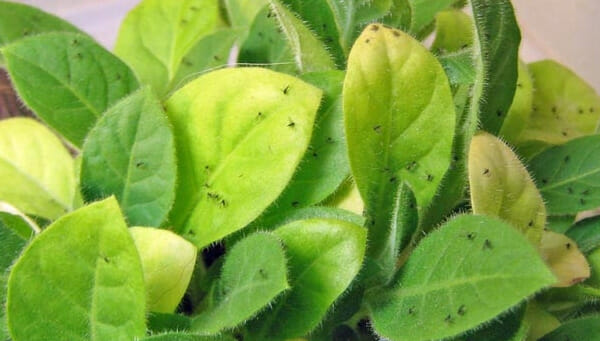
Fungus Gnats in Houseplants
Solutions and Preventions
If you are new to plants and have just learned about fungus gnats, don’t worry. Although they are a source of inconvenience but are not very harmful to your plants. Let’s look at the causes, solutions, and preventions for fungus gnats on houseplants in this article.
What are Fungus Gnats:
Fungus Gnats is a name for species of tiny insects. Attracted to moist conditions, they like to feed on fungi present in wet soil and other decaying matter like dead foliage. Adult gnats like mosquitoes are pretty annoying. However, the real threat to our plants is their eggs, also called larvae. An average adult fungus (female) can lay up to 200 larvae eggs at a time. These larvae eggs are known to hatch within five days and soon start feasting on the soil nutrients and the plants.
The Appearance of Fungus Gnats:
Fungus Gnats have an appearance like mosquitoes and fruit flies around the plants. Also, like fruit flies, they are tiny and look like black bugs found hovering over houseplants.
Fungus gnats are slender and have long legs. Their heads are black, and their wings are transparent. They are casually mistaken for fruit flies that have more orange and stubbier legs.
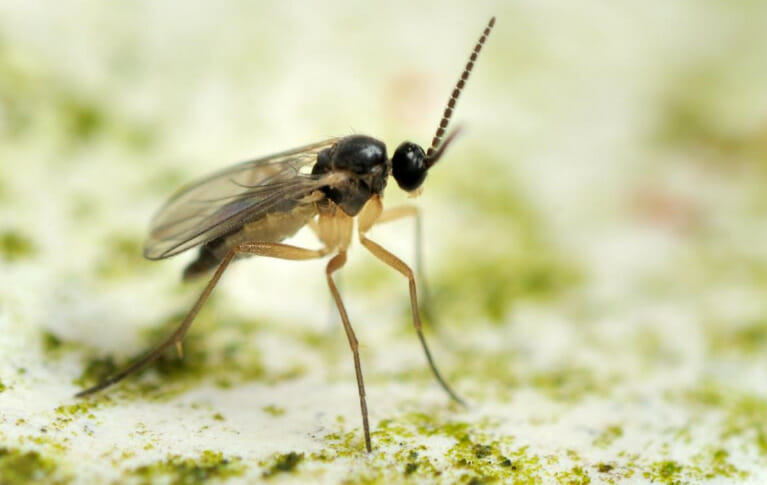
Does My Plant Have Fungus Gnats?
Before starting any treatment, it is important to identify if your plant has a Fungus Gnat problem or not. Fungus Gnats are usually on the houseplants with moist soil due to overwatering. So, look for these symptoms while identifying your Gnat problem.
- Stunted Growth: Adult gnats are not a problem. However, if they lay eggs, that can be concerning. The larvae love to feed on the plant’s roots. It can lead to roots’ inability to absorb nutrients. If you observe that your soil is moist, the plant is not growing, and you see bugs on the plants, then be aware that your plant has a gnat problem.
- Yellowing of leaves: Overwatering and continuous moist soil also cause yellowing of leaves and wilting. And fungus gnats also love damp soil. Therefore, in such conditions, your plant may be a victim of fungus gnats.
- Root rot: If you notice all the symptoms of root rot, either due to overwatering or fungal infection. Then the insects on the plant are fungus Gnats as they also love moist environments. So while you try to reverse the root rot, don’t forget to get rid of fungus gnats.

Causes of Fungus Gnats in Houseplants
The best way to avoid the fungus gnats is to identify their source of attraction. Here is the list of things that causes fungus gnats.
- Light Source: One of the most common things that attract fungus gnats is light. Therefore, avoid leaving unnecessary lights open near potted plants.
- Moist Soil: Moist or damp soil provides the perfect habitat to form fungus gnats in potted plants. Not having a good water schedule results in overwatering the plants.
- Location Change: Non-stop changing the location of the potted plants may result in temperature changes and therefore result in fungus gnats in plants.
- Debris of Gnats: If you’re bringing a new plant home, it is necessary to keep in mind that the pots and soil are clean from the plantation. Old remains of such fungus gnats can attract more fungus gnats.

How to Get Rid of Fungus Gnats in Houseplants
If your plants have been infected with Fungus Gnats, there are some natural, chemical-free ways that you can use to get rid of these bugs. However, you can use certain chemicals if the gnats affect the roots.
Non-Chemical Natural Ways for Treating Fungus Gnats
Natural methods should always be the first preference whenever a plant is involved. Because chemical treatments can be harsh on the leaves as well as roots. These natural and chemical-free solutions to eliminate fungus gnats will protect your plant.
1. Let the Soil Dry:
Fungus gnats in plants are known to be attracted to moist soil. That is so because the moist surface provides a suitable ground for the female gnats to lay their larvae eggs. When you’re non-stop watering your plants, you’re giving a very suitable habitat to these larvae. To prevent this, you must remember how much time and water you give your plants.
You can check the consistency of the water level on your plant by touching the soil. If the soil is damp or moist, it is better to let it dry entirely than water it more.
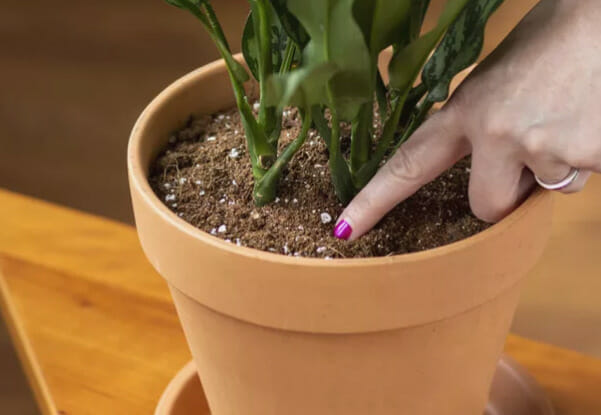
2. Change the Soil and Pot:
In case the plant has already been infected by the larvae, it is necessary to change the pot. Moreover, the soil must also be changed along with a proper cleaning process, like removing dead leaves. So, you can get rid of any remains of the larvae habitat.
3. Use Traps:
You can easily make several traps at home to catch these gnats. When the bugs get trapped, you can eliminate them. And if the plant already has some damage, you can take corrective actions to solve the problem of fungus gnats in your houseplants.
- Potato Pieces
Another way to see any larvae present on your plant is by putting small pieces of potato or potato wedges over your soil. After a few days, check those potato pieces. If there are larvae present on your soil, they will attack the potato pieces. If you check the lower side of the potato, you can easily see them. When the larvae are found, you can move or separate the plant and then change the pot and the soil along with cleaning the plant.
Just ensure that the potato pieces are fresh and not dried, or this trick won’t work.
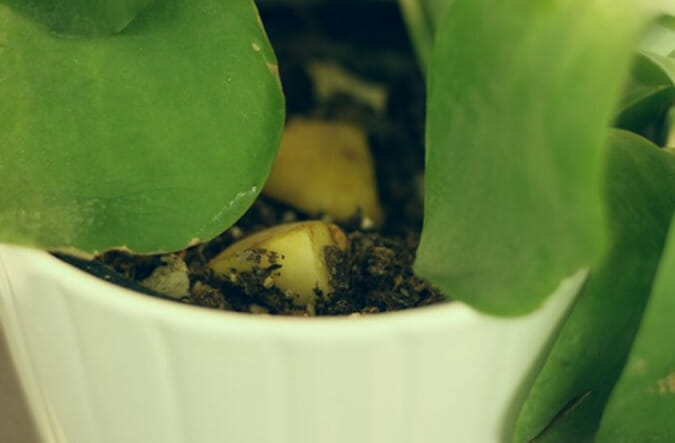
- Yellow Sticky Trap
These are pieces of paper that are sticky and yellow. The yellow color attracts the adult gnats, and they fly right into it.
You can cut small pieces of this yellow sticker card and put them under your plant’s canopy. As the gnats are trapped on this card, they soon die. You can change the yellow card once you feel there are enough dead bugs on them. You can easily find the yellow cards in nurseries and utility stores.
Using these cards will not stop the already present larvae eating your plant, However, the adult females can get trapped into them. This will lower the number of new larvae being produced
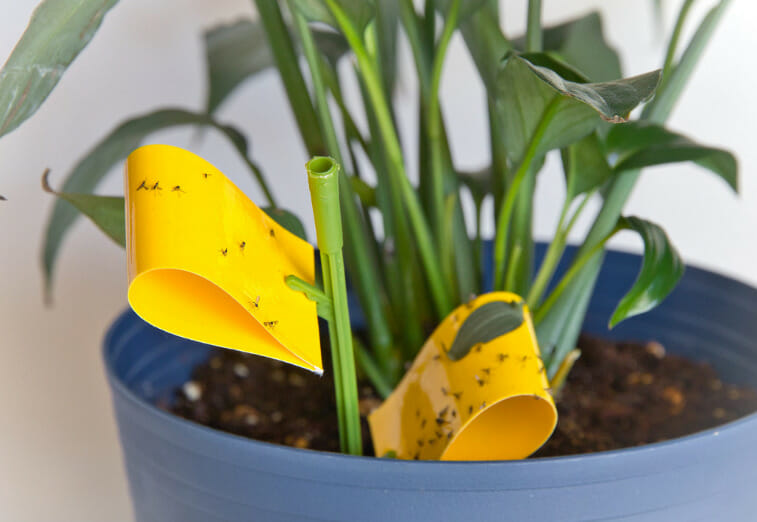
- Fly Paper:
Flypaper is like a ribbon, slightly different from a yellow sticker card. People hang flypaper on the walls, unlike the yellow sticker card you place in the plants. These are long pieces of sticky paper containing a poisonous substance and a sweet attractive smell which is an attraction for insects.
When the smell of the paper attracts the fungus gnats, they trap in the stickiness of the paper. And ultimately are killed by the poisonous substance. You can easily find flypaper in nurseries and utility stores.

- Cider and Vinegar Trap
Mix equal parts of cider and vinegar in a bowl and place them near the affected plant. It will lure the gnats, but they eventually drown in the bowl. Keep repeating the process until no gnats are left.
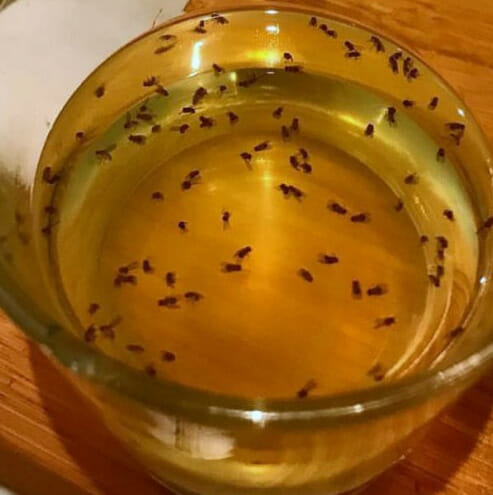
4. Isolate the Infected Plants
Sometimes, even on keeping a total check-in balance of the water level and proper cleaning, your plant still gets infected by these gnats. If you find any such fungus or larvae on your plants, it is necessary to separate that plant from the others as they can spread from one plant to others. After changing locations or isolating them, you can start treatment for removing gnats from the soil.
5. Introducing Nematodes:
Another non-chemical method is introducing the beneficial nematodes into the soil of the infected plant. Nematodes are tiny worm-like bugs that are not even visible to the naked eye. Although introducing worms to kill other bugs sounds gross, they effectively solve your problem. And when you release the nematodes into the soil, they consume all the bugs. However, it may take some time, depending upon the damage.
Beneficial nematodes are not harmful to humans, plants or your pets. Being predators, they only attack the bugs.
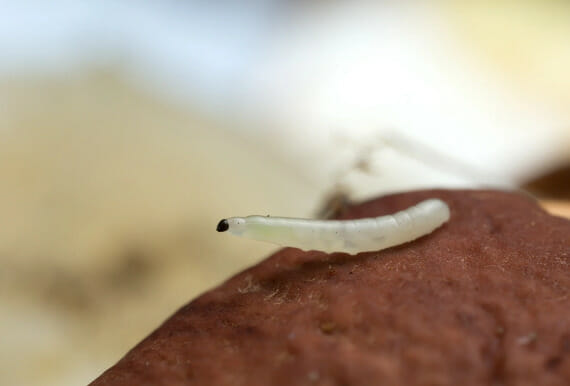
Chemical Ways for Treating Fungus Gnats
Sometimes the population of gnats increases uncontrollably and no home remedy proves effective. In such cases, insecticidal products are the solution.
1. Neem oil:
Neem oil is an excellent pesticide. As it is an organic product, it does not affect the plant’s health and is safe for humans. Simply dilute the neem oil with water and add it to a spray bottle. Spray the plant to kill any adult flies.
2. Hydrogen peroxide
This is a chemical and non-biological method. Hydrogen peroxide is a colorless liquid, and mixing it with water works as a disinfectant. It is poured into swimming pools to prevent bacteria or any algae formation. H2O2 (chemical formula) works as an oxidizing agent and therefore is very strong.
In Fungus gnats, hydrogen peroxide chemical properties act in such ways that they do not harm the plant but instantly kill the fungus larvae. Hence, dilute it with water and spray it on the plant’s soil. You’ll notice an acidic or sharp sound when you spray it on the soil. However, make sure that the soil is dry and not moist.
How to Prevent Fungus Gnats in Houseplants?
Precautions are always better in the case of plants. Otherwise, if the plant gets infected, the treatment and revival of the plant is a hassle. Take a few preventive measures to prevent fungus gnats in your houseplants.
1. Avoid Overwatering
Damp soil due to overwatering is the most common cause of fungus gnats. Overwatering is never good for plants’ health as mold, fungus, and pests love moist soil. Therefore, let your houseplants dry before the next watering.
Take care of watering as fungus gnats thrive in moist conditions. You can check the soil by poking your finger. If you feel the top 1-2 inches of the soil is dry, you can water the plants.

2. Clean the Debris of the Plant
Leaves usually fall off due to natural causes like strong winds, too much water pressure or unnatural causes like humans breaking or touching their parts. This debris falling on the soil provide great nutrients for the larvae. You must clean the dead foliage off the soil by picking them with your hands or any tools for houseplants.
3. Choose a Pot with drainage holes
Drainage holes are the most important factor one must check while buying a pot for their plants. Good drainage keeps the soil dry, eliminating the risk of gnats laying eggs. Good drainage in pots is also crucial for plants’ health as it prevents yellowing of leaves, wilting of leaves, formation of mold, and root rot.

4. Building Barriers
As moist soil attracts the fungus gnats to lay their eggs, we can form a barrier between the soil and the adult gnats. In this way, there is a high possibility that the fungus gnats will not infect the soil. Putting dry sand, small stones, or pebbles on the corners of the pot can prevent the fungus gnats from laying their eggs.
5. Bottom Watering
Bottom watering is an effective technique that reduces the moisture content in the soil. Since gnats live on the moist surface of the soil, bottom watering helps reduce the soil’s dampness. Bottom watering provides moisture content to the roots but keeps the upper surface dry. Hence the gnats do not get favorable conditions to lay eggs and multiply.

Conclusion:
Fungus gnats in houseplants are a complete nuisance as they ruin our plants. However, you can easily get rid of them by taking proper action. Moreover, you can also prevent your plants from these gnats by taking preventive measures.
If you find this article helpful, check our website for more articles on plants and planters.


